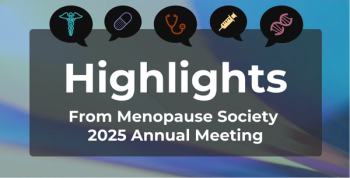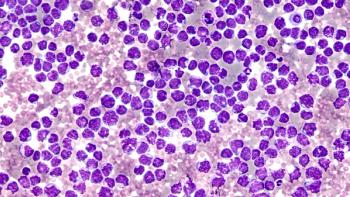
Understanding Patient and Caregiver Burdens in Acute Leukemia Treatment
Key Takeaways
- Patients with acute leukemia prioritize tiredness as the most important health dimension over cognition, differing from the general public's preferences.
- Informal caregivers report significant emotional, mental, physical, professional, and social burdens, often providing extensive daily care for patients with acute leukemia.
Caregivers and patients with acute leukemia face unique challenges, prioritizing treatment preferences that impact quality of life and emotional well-being.
Treatment of acute leukemias has a significant impact on the quality of life for both patients and caregivers, with patients concerned about outcomes like cognition and tiredness and caregivers reporting emotional, mental, physical, professional, and time burdens, according to 2 posters presented at the European Hematology Association annual meeting.
Patient Preferences
In the poster looking only at patient preferences,1 researchers examined the “core” EQ-5D dimensions and added the “bolt-on” items of cognition and tiredness. They added these items because generic measures such as EQ-5D do not always capture all aspects of health-related quality of life, but adding additional measures may improve health outcomes measurements.
“However, for these additional items to have an impact on reimbursement decisions improvements in them must, by convention, be valued by the general population,” the researchers noted. As a result, they included patients with acute leukemias (n = 79) and the general population (n = 100) in their analysis.
The responses were all collected in the United States, with additional data collection ongoing in the United Kingdom, France, Germany, Italy, and Spain. Among the patients with acute leukemias, 42% had acute lymphoblastic leukemia, 40% had acute myeloid leukemia, and 18% had acute promyelocytic leukemia.
The study found differing priorities. The general public ranked cognition as the most important health dimension (19.8%), with tiredness last (10.9%). However, the patients identified tiredness as their top concern (17.4%), with cognition ranking fourth (15.2%). The relative importance score for pain/discomfort was similar among the groups (15.7% for the general public and 15.9% for patients), with the general public ranking it second and patients also ranking it second (tied with mobility).
“A more patient-centred approach to the valuation of health outcomes may therefore lead to different results and potentially different reimbursement decisions,” the researchers concluded.
Perspectives of Informal Caregivers
Informal carers often manage an immense strain as they can play a critical role in the treatment and care of patients with acute leukemia. Semi-structured interviews with 60 informal carers explored the burdens of providing care and the carer’s treatment priorities.2
The qualitative preference study was by the Acute Leukemia Advocates Network in collaboration with The Office of Health Economics.
Slightly more than half (53%) of the carers were female, and the majority (82%) lived with the patient, with 45% looking after a parent and 35% a spouse. More than half (57%) said they provide “constant care,” or more than 5 hours daily, with responsibilities including housework, emotional support, transportation to appointments, assistance with treatment, hygiene, and administrative tasks.
This dedication takes a heavy toll on their quality of life, impacting them in various ways:
- Emotional and mental burdens: Caregivers reported a range of feelings, including worry, helplessness, anxiety, and depression. Nearly 40% felt obligated to care for their loved one.
- Personal health: Many reported difficulties sleeping, reduced exercise, and mental and physical fatigue.
- Professional and financial impact: 62% faced an impact on their professional career, including reduced hours, changing jobs, or retiring early, leading to negative financial consequences.
- Social and time burden: Most caregivers (68%) reported a negative impact on their social lives, and nearly half reported their responsibilities were "time-consuming" and they felt like they were "on call 24/7.”
“Carers play a supportive role in treatment decision-making and they prefer treatments with less burden on the patient and themselves but are willing to make sacrifices to ensure the patient’s needs come first,” the researchers concluded.
References
1. Nier S, Chowdbury S, Skedgel C, Mott D. Understanding the preferences of people with acute leukemia for different health outcomes. Presented at: EHA2025 Congress; June 12-15, 2025; Milan, Italy. Poster PS2302.
2. Nier S, Henderson N, Radu P, Theakston C, Mott D. Understanding of the perspectives and preferences of informal carers of people with acute leukemia: insights from a qualitative study. Presented at: EHA2025 Congress; June 12-15, 2025; Milan, Italy. Poster PF1283.
Newsletter
Stay ahead of policy, cost, and value—subscribe to AJMC for expert insights at the intersection of clinical care and health economics.













































